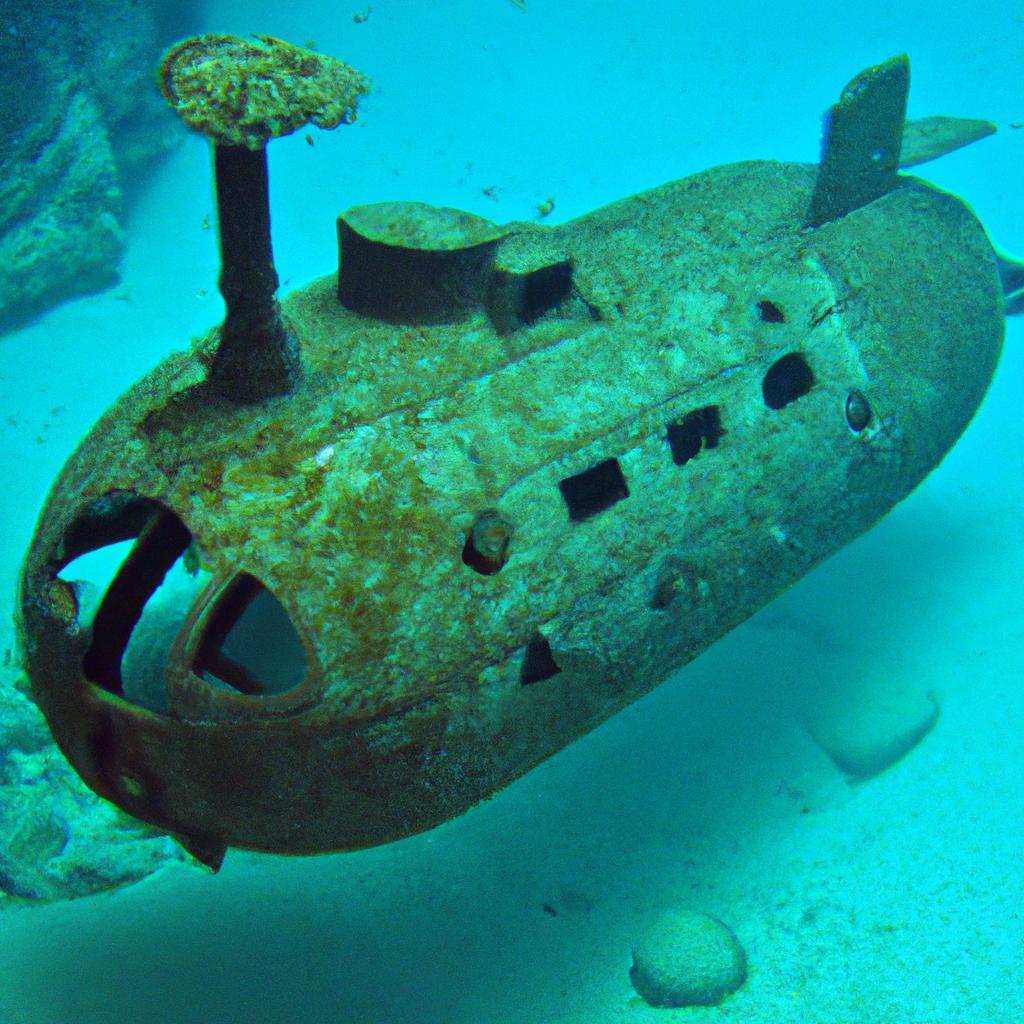Submarine sculpture has emerged as a captivating art form in recent years, garnering immense popularity. It offers a mesmerizing and unparalleled experience, both for divers and marine enthusiasts. In this article, we will take a deep dive into the world of submarine sculpture, unraveling its significance, history, and myriad benefits.
Submarine sculpture not only fuses the aesthetics of art but also the wonders of the ocean. It manifests in various forms, ranging from installation-based sculptures to floating and underwater marvels. These sculptures are crafted using a diverse array of materials, such as bronze, concrete, and fiberglass.
The allure of submarine sculpture lies in its ability to provide a truly unique and immersive encounter. It is not just a visual spectacle; it tantalizes the senses, as these sculptures interact with the marine environment and evolve over time, adorned with marine life.
Let’s explore the different types of submarine sculptures, the intricate process involved in their creation, and journey across the globe to witness famous examples. Additionally, we’ll delve into the positive impact of submarine sculpture on tourism and the preservation of marine life. So, get ready to dive in!
Types of Submarine Sculpture
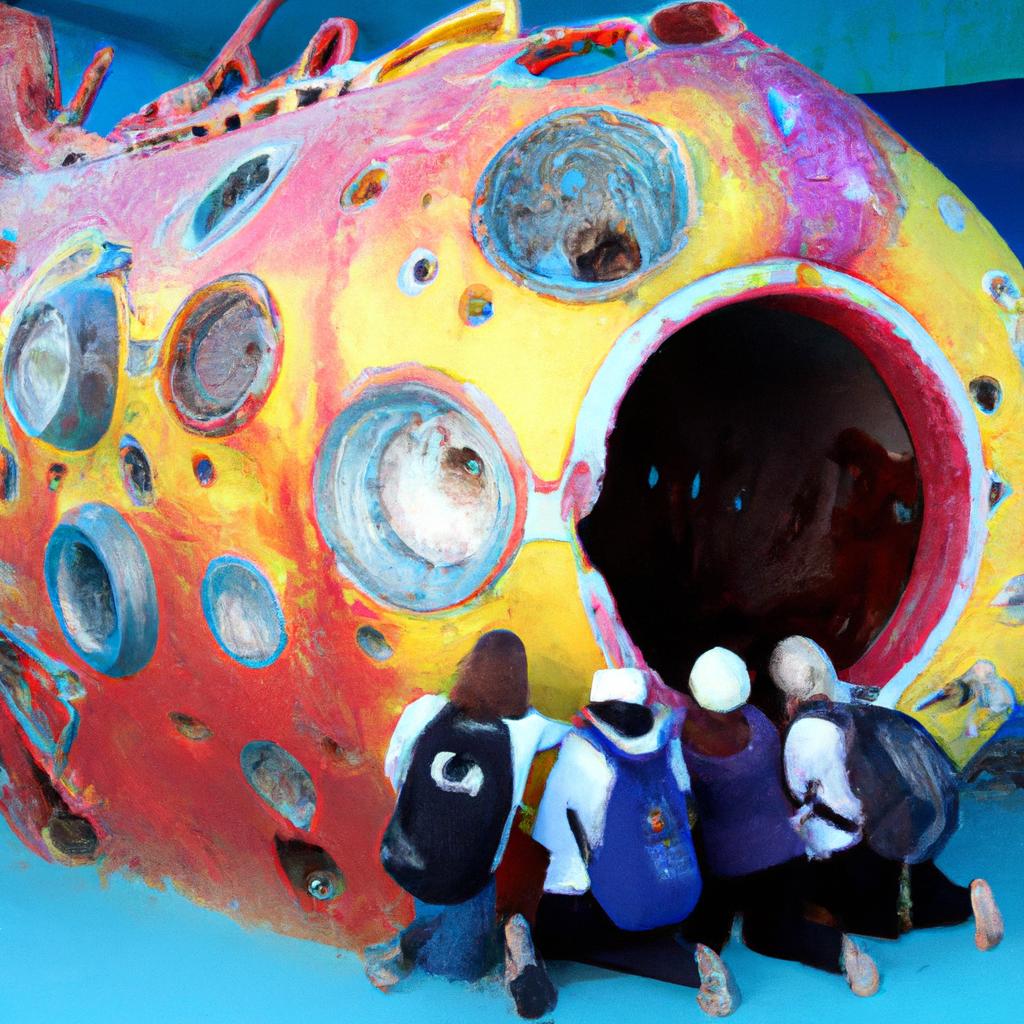
Submarine sculpture encompasses a multitude of forms, each possessing its own unique characteristics. In this section, we will delve into three prominent types of submarine sculpture: installation-based, floating, and underwater.
Installation-based Submarine Sculptures
Installation-based submarine sculptures are crafted on land and later transported to their intended underwater locations. These sculptures are typically constructed from materials that pose no harm to the marine environment and are securely anchored to the ocean floor. They vary in size, shape, and interpretation, ranging from abstract to representational.
A stunning example of an installation-based submarine sculpture is “Ocean Atlas” by Jason deCaires Taylor, situated in the crystal-clear waters of the Bahamas. This sculpture depicts a 5-meter tall statue of a young Bahamian girl, firmly anchored to the seabed.
Floating Submarine Sculptures
Floating submarine sculptures are designed to grace the water’s surface, offering a distinctive visual encounter for observers both above and below. Crafted from lightweight materials, these sculptures can be tethered to the ocean floor to prevent drifting. Often, they are utilized in conjunction with installation-based sculptures, creating a fully immersive experience.
“The Raft” by Colleen Flanigan, located in the captivating Florida Keys, serves as a prime example of a floating submarine sculpture. This sculpture emulates the structure of coral reefs, creating a habitat for marine life while simultaneously providing viewers with a unique visual spectacle.
Underwater Submarine Sculptures
Underwater submarine sculptures are directly crafted within the ocean, enabling them to intimately interact with the marine environment and gradually become adorned with marine life. These sculptures can be molded from a myriad of materials, including bronze, concrete, and fiberglass. Some even offer interactive features, allowing divers to explore and engage with the sculptures.
One remarkable example of an underwater submarine sculpture is “The Silent Evolution” by Jason deCaires Taylor, located in the vibrant waters of Cancun, Mexico. This awe-inspiring installation comprises over 400 life-sized figures, meticulously installed on the ocean floor, fostering the development of an artificial reef and providing a haven for marine life.
The Making of Submarine Sculpture
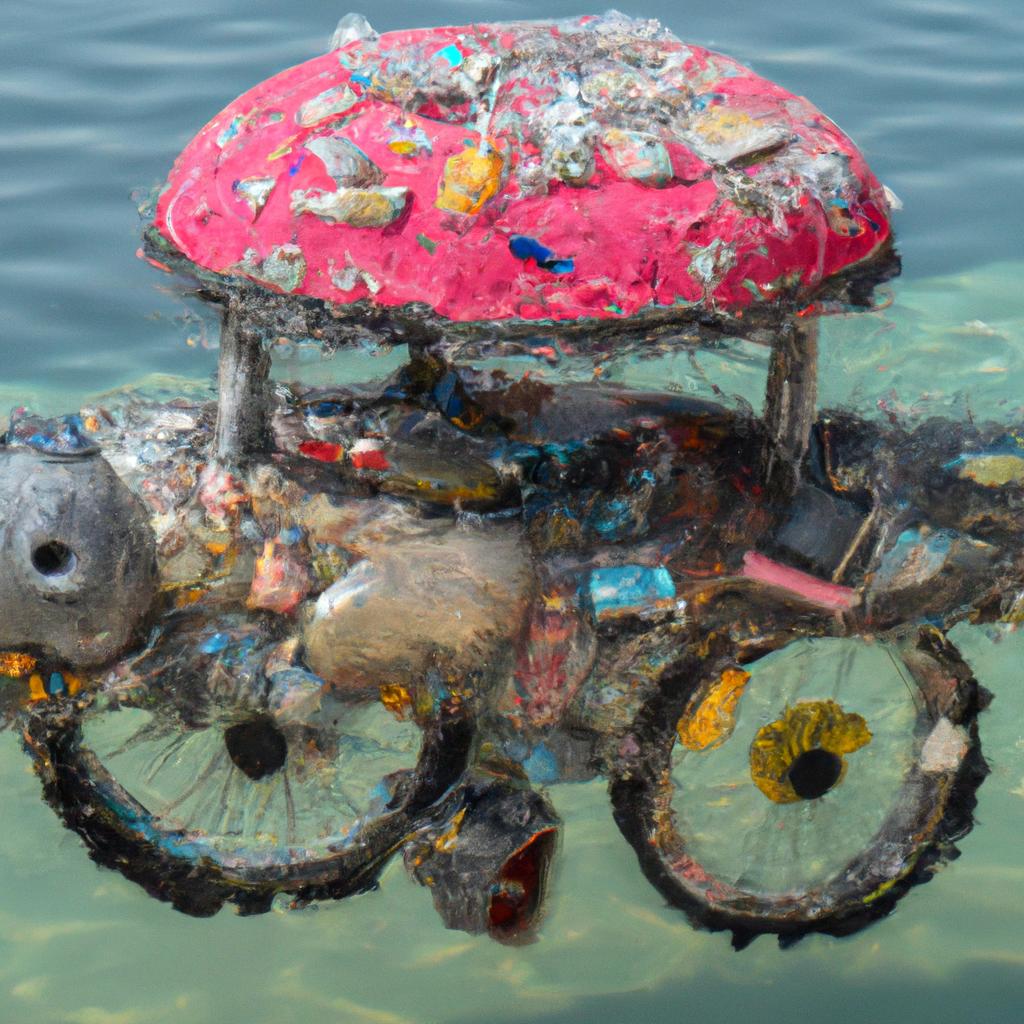
Creating a submarine sculpture entails a meticulous and intricate process, demanding careful planning, attention to detail, and a profound understanding of the marine environment. In this section, we will explore the diverse materials, techniques, and safety measures employed in the making of submarine sculptures.
Materials Required
Submarine sculptures are crafted using a medley of materials, determined by the artist’s preferences and the sculpture’s intended location. Common materials include bronze, concrete, fiberglass, and steel. These materials are chosen for their durability and capacity to withstand the harsh marine environment.
Artists often incorporate materials that promote the growth of marine life, such as coral-friendly cement, fostering sculptures that interact with and support local ecosystems.
Techniques Used in Sculpture Making
The techniques employed in submarine sculpture making are as varied as the artist’s vision and the sculpture’s setting. Casting, welding, and molding are the most prevalent techniques utilized.
Casting involves creating a mold of the sculpture and then pouring the selected material into the mold. Welding entails joining distinct metal pieces together to fashion the sculpture, while molding involves crafting a mold of the sculpture, which subsequently facilitates the creation of multiple replicas.
Creating a submarine sculpture can span several months or even years, as artists meticulously consider the ever-changing marine environment and the impact of marine life on the sculptures.
Importance of Safety Measures
The process of sculpting underwater poses inherent dangers, necessitating stringent safety measures to protect both the artist and the marine environment. These precautions involve employing non-toxic materials, responsibly disposing of waste materials, and ensuring that the sculpture does not harm the marine ecosystem.
Moreover, artists must prioritize the safety of divers and other marine enthusiasts interacting with the sculptures. Proper placement of the sculpture and clear signage are crucial in preventing accidents and maintaining the integrity of the artwork.
In the following section, let’s embark on a journey to explore some of the world’s renowned submarine sculptures.
Famous Submarine Sculptures Around the World
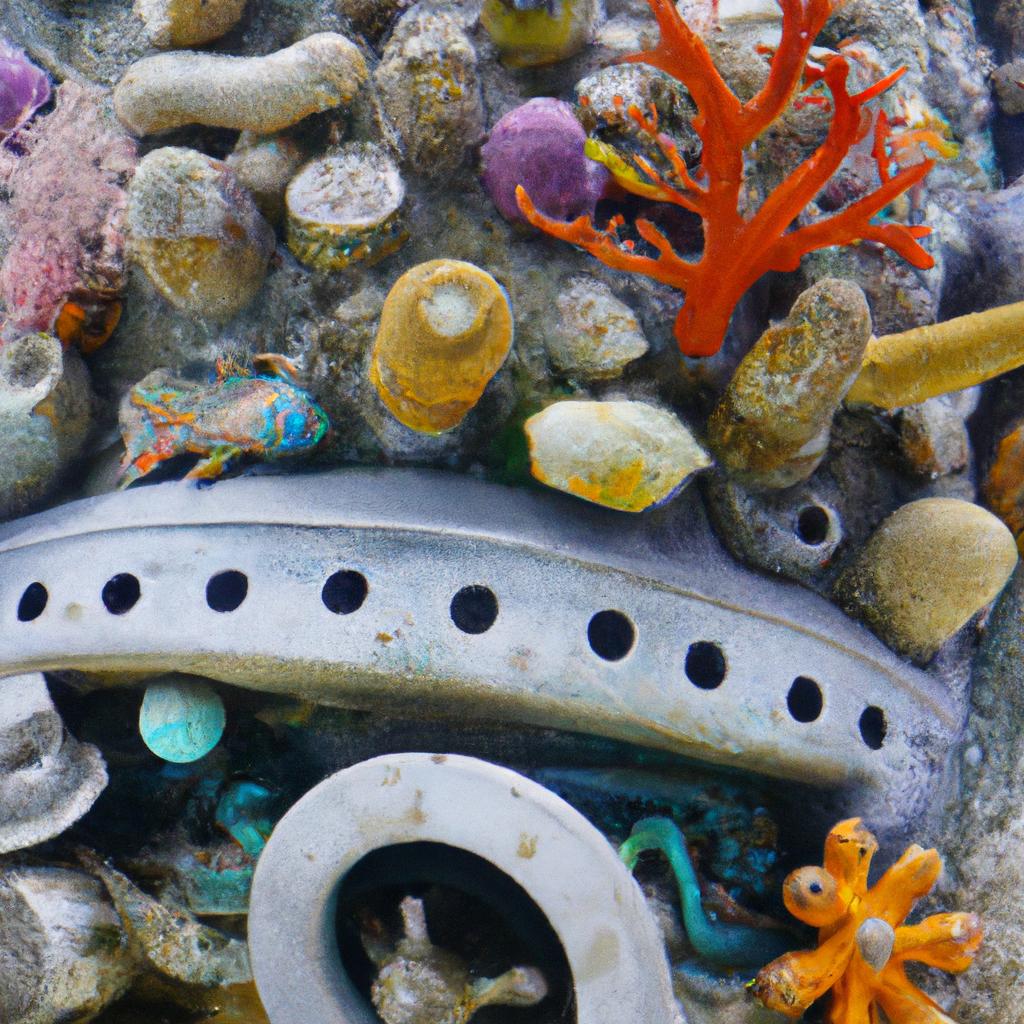
Submarine sculptures have transformed into captivating tourist attractions across the globe, with numerous extraordinary examples present in various locations. Let’s delve deeper into some of the most notable submarine sculptures worldwide.
The Silent Evolution in Cancun, Mexico
“The Silent Evolution” stands as a grand-scale underwater installation situated off the coast of Cancun, Mexico. Crafted by the renowned artist, Jason deCaires Taylor, this installation showcases over 400 life-sized sculptures, each cast from local residents of a nearby fishing village. These sculptures are grouped together, each substantiality representing distinct facets of Mexican life and culture. Divers and snorkelers flock to this installation from all corners of the world, making it a prominent tourist attraction.
The Underwater Museum of Art in Florida, USA
Another illustrious example of submarine sculpture is the “Underwater Museum of Art,” nestled off the coast of South Walton, Florida. This museum boasts a collection of underwater sculptures devised by various artists, with each sculpture serving as an artificial reef, fostering marine life. Offering accessibility to divers and snorkelers, guided tours are also available for those seeking a deeper understanding of the sculptures and their creators.
The Christ of the Abyss in San Fruttuoso, Italy
Beneath the azure depths off the coast of San Fruttuoso, Italy, rests “The Christ of the Abyss” – a captivating bronze statue of Jesus Christ. The statue was submerged there in 1954, paying homage to a diver who lost his life in the vicinity. Each year, this poignant sculpture entices divers and snorkelers from worldwide destinations, who embark on a pilgrimage to witness its majesty.
These are just a few illustrious examples of submarine sculptures located across the globe. Each sculpture possesses its own uniqueness, allowing us a glimpse into the awe-inspiring beauty and enchantment of the ocean.
Benefits of Submarine Sculpture
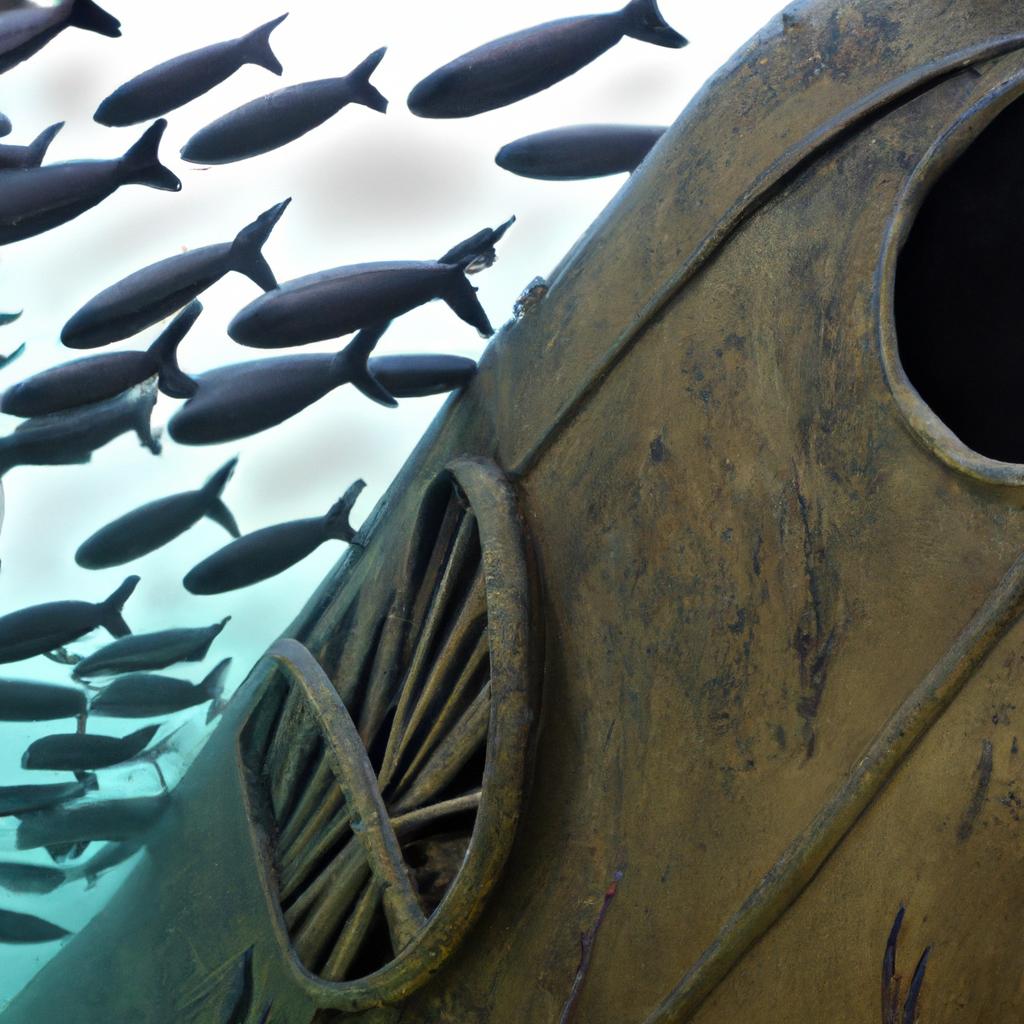
Submarine sculpture offers a multitude of advantages, both for the environment and the local community. Let’s explore some of the most significant benefits:
Increase in Tourism
Submarine sculptures serve as captivating and unparalleled attractions for tourists. They provide an unforgettable experience, allowing visitors to closely interact with the sculptures and the marine life they harbor. Such experiences foster tourism in the local community, generating revenue and creating job opportunities.
Environmental Benefits
Submarine sculptures can positively impact the environment, acting as artificial reefs and providing a habitat for marine life, thus promoting biodiversity. As these sculptures become encrusted with marine life, they aid in absorbing carbon dioxide, thereby mitigating the impact of climate change.
Preservation of Marine Life
Moreover, submarine sculptures play a pivotal role in raising awareness about the preservation of marine life. By incorporating marine life themes into their sculptures, artists inspire people to develop a deeper connection with the ocean and its inhabitants. This, in turn, fosters conservation efforts, ensuring the protection of marine life for future generations.
In conclusion, submarine sculptures offer abundant benefits to society and the environment at large. They provide a unique and immersive encounter for tourists, promote biodiversity, marine life preservation, and raise awareness about the significance of ocean conservation. With more artists and communities embracing this art form, our oceans and the captivating creatures they harbor can look forward to a brighter future.
Discover more about the wonders of nature, gardening, and animals at TooLacks. Stay tuned for more enthralling and informative content that will keep you captivated.
Citations:
- “The Silent Evolution” by Jason deCaires Taylor. (n.d.). Retrieved from https://www.underwatersculpture.com/portfolio_page/the-silent-evolution/
- “Underwater Museum of Art” by Cultural Arts Alliance of Walton County. (n.d.). Retrieved from https://umafl.org/
- “Submarine Sculpture: A Unique and Immersive Art Form.” (2021, June 16). Ocean Scuba Dive. Retrieved from https://www.oceanscubadive.com/submarine-sculpture/
Conclusion
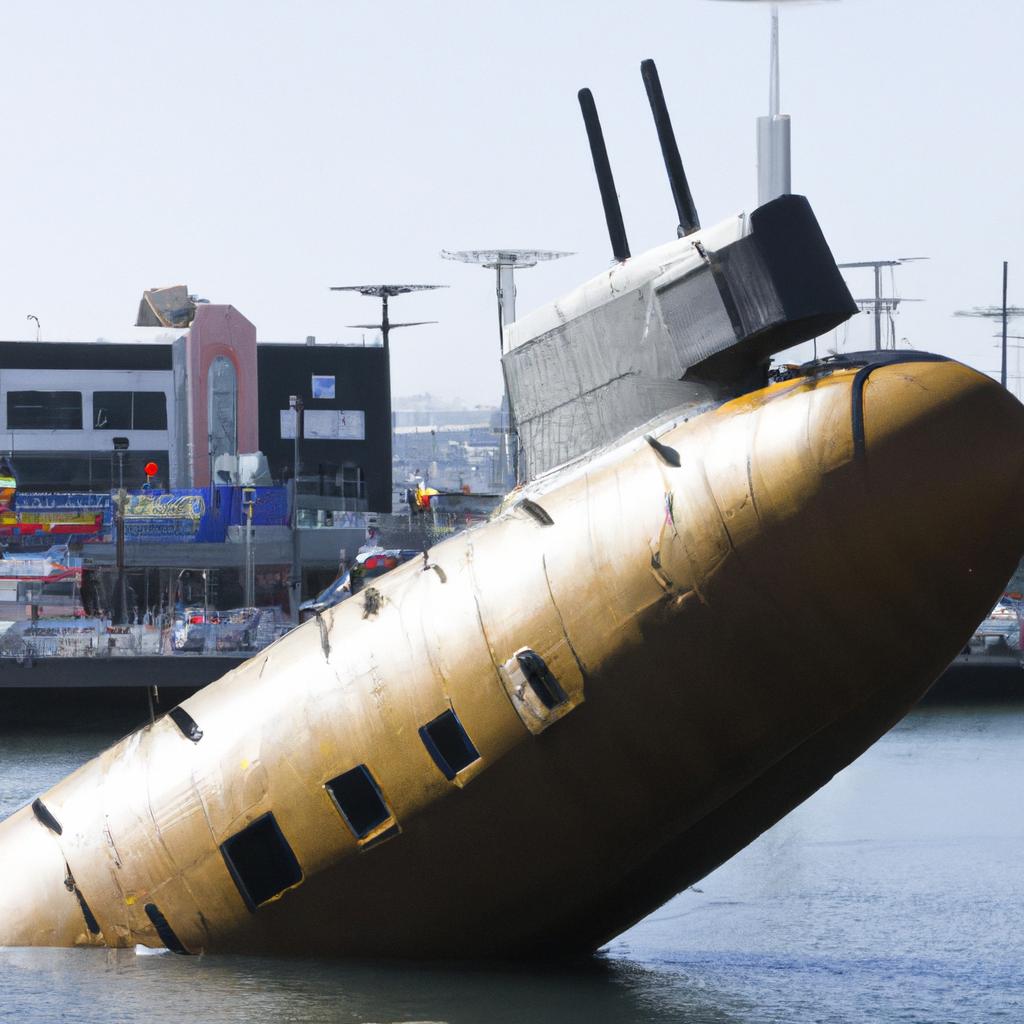
In conclusion, submarine sculpture represents a captivating art form that seamlessly merges creativity, marine life preservation, and environmental awareness. It offers divers and marine enthusiasts a unique opportunity to explore the beauty and diversity of marine life. Throughout this article, we have explored the various types of submarine sculptures, the intricate process of their creation, and some renowned examples from around the world. We have also examined the myriad benefits of submarine sculpture, ranging from its positive influence on tourism to its profound impact on marine life preservation.
By embracing the beauty of submarine sculpture, we can immerse ourselves in the wonders of the ocean and kindle a profound appreciation for the captivating creatures that call it home. As its popularity continues to soar, anticipate witnessing the emergence of even more innovative and creative submarine sculptures in the years to come.
At TooLacks, we are dedicated to sharing the latest news and information about nature, gardening, and animals. We hope this article has provided you with an informative and engaging read, and we look forward to sharing more exciting content with you in the future.
